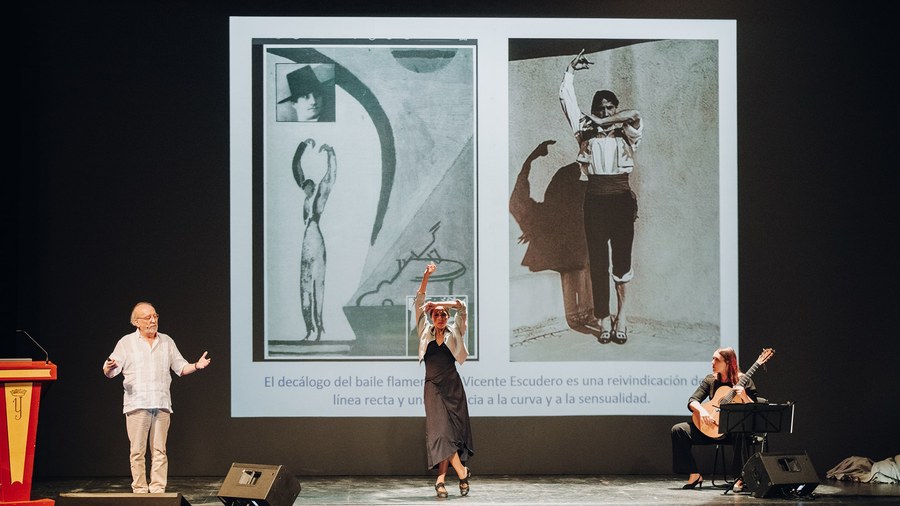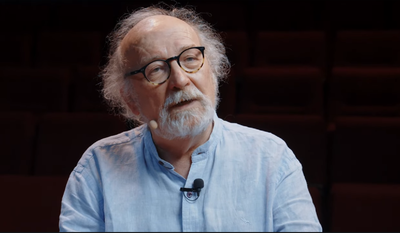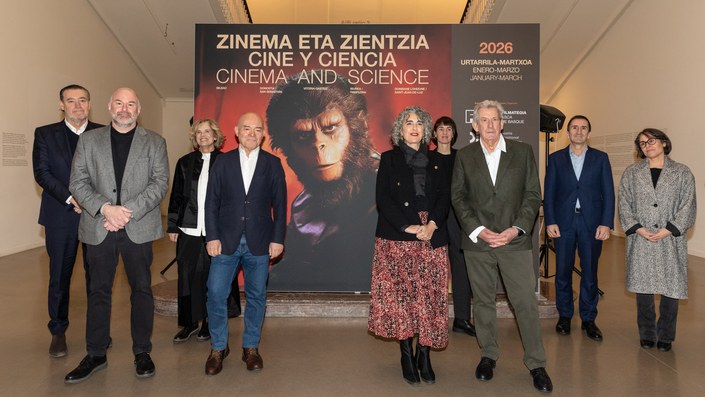Crystallization of dance

Crystals have fascinated humans since time immemorial. We have proof that the first objects collected by hominids were quartz and calcite crystals, possibly attracted by their particular optical properties and geometric shapes. The scientific advances of the 20th century finally made it possible to observe their entrails and discover what underlies their nature at the molecular level; an arrangement of matter that propagates infinitely in space.
The implications of such a finding are immense and have had a profound impact on scientific knowledge and advances, from physics or chemistry to biology and medicine. Who would have imagined that we could create crystals based on proteins to determine their structure with X-rays? Crystals have unveiled a whole world of structures and symmetries that are not visible at first sight, and have also influenced and inspired artistic creation through disciplines such as architecture, painting and dance.
The show The crystallization of dance (La cristalización de la danza), is an original proposal born from the meeting between the crystallographer Juan Manuel García Ruiz and dancer and choreographer Vanesa Aibar. A crossroads that runs through the lesser-known historical relationship of crystals with modern dance and flamenco, and invites to reflect on their complementary visions of art, confronting the idea of abstraction, represented here by the inorganic and crystalline, with the empathy embodied by the biological and natural.
VANESA AIBAR, dancer
JUAN MANUEL GARCÍA-RUIZ, speaker
MARÍA MARÍN, musician

Geologist Juan Manuel García-Ruiz (Seville, 1953) is Ikerbasque Professor at the DIPC and ad honorem Research Professor at CSIC.His research focuses on the study of crystallization phenomena in fields such as the formation of giant crystals, self-organization in biological and geological structures with implications in the origin of life, the detection of primitive life, and the fabrication of new materials. He leads the ambitious European ERC-Synergy project “Protos” and is a cultural agitator committed to the promotion of scientific culture and the exchange of art and science.

Vanesa Aibar is a dancer and creator and develops her work from the flamenco to lead to a modern dance, free, aesthetic and of great technical qualities. Sierpe (2019), her first solo show, combines her fascination for Spanish folklore with a reflexion on femininity. Other choreographies she firms are Liminal, Áspid and others driven by hybridization with other artists such as Todas Las Noches (Every night), together with Sara Cano or La Reina del Metal (Queen of Metal), with Enric Monfort. He has several awards in his career, the last one received, the Max Award for Best Dance Show for La Reina del Metal in 2023.

María Marín. Cantaora and guitarist born in Utrera, she trained in classical guitar in the Netherlands and is an artist with an open vision of flamenco who has collaborated in jazz, classical and world music projects with great international artists such as Carles Benavent, Tomatito, Antonio Serrano and Javier Colina.
The project has been supported by the Spanish Foundation for Science and Technology (Fecyt) Ministry of Science, Innovation and Universities, the Spanish National Research Council (CISC) and DIPC and the collaboration of INAEM-Ministry of Culture.
There are no events scheduled
Activities
All activities +- Passion for Knowledge
- Cinema and Science Series
- Art and Science
- STROM - Inclusive Astronomy
- The San Sebastian Festival with science
- Encounters top@DIPC Zientziarekin solasean!
- Emakumeak Zientzian
- School visits
- On Zientzia
- Kutxa Fundazioa and DIPC
- Crystallization of dance
- Ciencia Jot Down
- Donostia, Zientzia Hiria
- New Paths of Science
- Pride in Science
- Mestizajes
- Zientzia astea
- El Palo de Eratóstenes
- Aranzadi Astronomy Seminars
- Inspira Bizitzak
- Donostia Week-INN
- Mapping Ignorance
- IKUR Quantum Talks
- Collaborations
- Special events
- Science and Chess
- Kimikoteka
- Bertsozientzia
- Naukas Donostia
- nanoKOMIK
- Albert Einstein
- STEAM Sare: Gravitating Bodies





